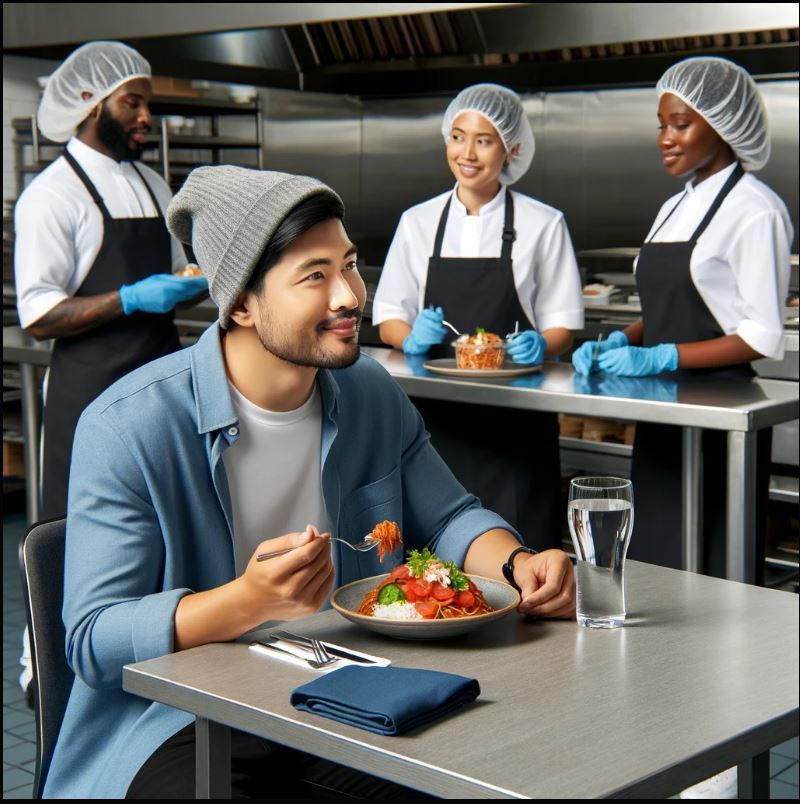
Introduction
When dining out, the quality and safety of the food are as important as its taste. As a savvy consumer, knowing what to look for in a restaurant’s food preparation practices can assure you of a safe and enjoyable dining experience. Here’s a guide to help you identify the key indicators of a well-run commercial kitchen.
1. Visible Cleanliness
- Clean and Organized Kitchen:
- Peek into the kitchen, if visible, to check for overall cleanliness. Surfaces should be clean, and there should be a clear system of organization.
- Staff Hygiene:
- Notice if the staff members are washing their hands frequently, especially after handling different food types or interruptions.
2. Appropriate Attire
- Gloves and Hairnets:
- Staff should wear gloves when handling ready-to-eat foods and change them between tasks. Hairnets or chef hats should be in use to prevent hair from contaminating the food.
3. Correct Food Handling
- Cross-Contamination Awareness:
- Watch for signs that the kitchen is avoiding cross-contamination, such as using separate cutting boards for meat and vegetables.
- Temperature Control:
- In buffets or display counters, check if hot foods are kept hot and cold foods are kept cold. This is crucial for preventing bacterial growth.
4. Proper Storage Practices
- Food Storage:
- Observe if the restaurant stores food at safe temperatures. Cold foods should be refrigerated and hot foods kept warm.
- Expiration Dates:
- In self-serve areas, check if food items are labeled with expiration dates or prepared-on dates.
5. Certifications and Ratings
- Health Inspection Scores:
- Many restaurants display their health inspection scores. Look for these scores, usually found at the entrance, to gauge the kitchen’s compliance with safety standards.
- Certifications:
- Some restaurants boast certifications in food safety management. These can be a good indicator of a kitchen’s commitment to safety.
6. Responsiveness to Customer Concerns
- Staff Interaction:
- Pay attention to how staff members respond to questions about food safety or ingredients. A well-informed and responsive team is a good sign.
7. Review Online Feedback
- Customer Reviews:
- Check online reviews for mentions of cleanliness and food safety. Consistently positive feedback in these areas is reassuring.
Conclusion
As a consumer, your health and safety are paramount. By being observant and informed about the food safety practices in commercial kitchens, you can make better dining choices. A commitment to these standards is a hallmark of a restaurant that values its customers and offers not just delicious but also safe and hygienic meals. Remember, your well-being is worth the extra scrutiny!
—
Adapting your awareness as a consumer to these aspects can significantly enhance your dining experiences and ensure peace of mind when eating out.



